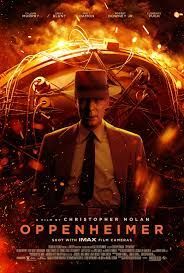A quantum physics adventure with "Kitty Q"
Mit „Katze Q“ in die Quantenphysik!

In December, a very interesting project at GISW came to a close with a visit from Mr. Carsten Albert, a doctoral student at TU Dresden, Germany.
At the beginning of the school year, eleven students in grade 9 applied to take part in a study on the subject of quantum physics as part of their NWP-class (science practical course).
The study was conducted and evaluated by Mr. Albert as part of his doctoral thesis and is a modern teaching concept developed especially for younger students, as quantum physics is normally taught only in advanced courses in grade 12.
In the eight double lessons students were able to achieve a conceptual understanding of exciting phenomena of physics such as superposition and entanglement without doing complicated calculations. They discussed current scientific and technical developments such as quantum computing and learned in a playful way how to use simple HTML simulations. Together with Mr. Haider and an App called Kitty Q, they embarked on a quantum adventure.

Here a few comments by our students:
“I found this course to not only be informative” said Emil F., “but also a step into a world of unknowns, helping aspiring students such as myself to enter a field usually inaccessible to most in our grade level.”
Eleni B. said, “the methods we used were very cool. My favorite was a game called Kitty Q."
And Henry J. remarked that “the Quantum-Physics Course was a very captivating class, as I have learned a lot from it. It sounds complicated but is not extremely demanding. I perceived a new perspective on the subject in a really fun way and would gladly take it again.”

Coincidentally, the movie "Oppenheimer" which was released this summer, was the perfect way to introduce this topic and gave our 9th and 12th grade students the opportunity to learn about the scientifically significant developments in physics. The movie described the extraordinary achievements in applied physics of German-educated Robert Oppenheimer and his team. (See the movie review by 12th grader Annabel S. in the October issue of the GISW Student Gazette.)
Steffi Colopy
(STEM Coordinator)
Courtesy of the editor-in-chief of the GISW GAZETTE: Cornelius E.
OPPENHEIMER-On and Off Screen
Written by: Annabel S. (12th grade)
Whether it’s from the newly released film or your history textbook, you’ve probably heard of J. Robert Oppenheimer in some capacity. If you’d like to learn more about the man portrayed in the film, this article covers plenty about his life before, during and after World War II. And if you’re also interested in the film itself, a review of the filming style and cinematic aspects ensues. In Oppenheimer, the only thing more explosive than the bomb is the intense drama that unfolds, mirrored perfectly by the filming style and well-chosen cast.
Eagerly awaited by cinematography and history enthusiasts alike, Oppenheimer, directed by Christopher Nolan and released in the summer of 2023 was bound to take the world by storm. Interesting and original, dramatic while remaining accurate, Oppenheimer isn’t just a run of the mill WWII movie. It’s a cleverly crafted story that revolves around a single historical figure – J. Robert Oppenheimer – and his life before, after, and especially during the Second World War. It sets itself apart from other WWII movies by not just focusing on the technical details of the infamous bomb, but by also featuring a romantic subplot and a tense political intrigue in the form of his wife (Emily Blunt) and Lewis Strauss (Robert Downey Jr.), respectively. And yet among all this drama, Oppenheimer remains very closely tied to the original progress of the war. Ignoring some dramatic embellishments that come with the territory in historical filmmaking, Oppenheimer remained stunningly accurate and closely linked to the man it is based on.
The Life of J. Robert Oppenheimer
- Robert Oppenheimer (1904-1967), portrayed by Cillian Murphy, was an American physicist and one of the most influential figures in the development of nuclear weapons in the 20th century. Born into a wealthy secular Jewish family in New York City, he showed intellectual prowess at a young age and earned a PhD in theoretical physics from the University of Göttingen in Germany.
Growing up, Oppenheimer did not attend synagogue or have a bar mitzvah. Rather, his family joined the Ethical Culture Society (an offshoot of Reform Judaism that rejected religious beliefs in favor of secular humanism and rationalism). Oppenheimer always insisted that he was not Jewish and did not speak German, although he was often referred to as a "German Jew." Even though he read the language well, openly identifying as either of these in the anti-Semitic atmosphere of the 1930s would likely have led to great difficulty in his pursuit of academic success.
It is written about Oppenheimer that he did not identify with the Jewish part of him, but when he heard about what was happening in Germany during World War II, he was disgusted by the treatment of Jews and was eager to join the war effort. He was never interested in current issues such as economics and politics until he saw through his students and friends how the current politics of a country can affect everyone.
During World War II, Oppenheimer was appointed scientific director of the Manhattan Project, a top-secret U.S. government initiative to develop the atomic bomb. He was head of the Los Alamos laboratory and oversaw the final production of the atomic bombs that were later dropped on Hiroshima and Nagasaki, costing over 200,000 people their lives.
Despite his role in the Manhattan Project, Oppenheimer later became an advocate of international control of nuclear weapons and expressed deep regret over their destructive power. This change in his views led to conflicts with government officials during the McCarthy era, and he faced a security clearance hearing in 1954 that resulted in the revocation of his security clearance, as seen in the film.
At the hearing, Oppenheimer was accused of, among other things, being associated with the Communist Party. Although Oppenheimer never joined the Communist Party, he supported some of its causes and was close friends with Communist Party members. His brother was also a member of the Communist Party, a fact the hearing did not let slip. In the aftermath of these events, Oppenheimer continued his scientific work, contributing significantly to astrophysics and quantum field theory.
Cinematic Review of Oppenheimer
Director Nolan's signature storytelling style shines through in Oppenheimer with its non-linear narrative and intricate plot structure. Furthermore, Nolan’s distinction between the two main timelines, through the use of a black and white filter, helps the viewer keep track of what is happening when. The use of this filter makes it all the more satisfying when at the end of the movie the black and white parts (originally meant to show the future timeline) converge with the ‘regular’ parts, thus bringing the viewer to the end of Oppenheimer’s in-movie journey.
Cillian Murphy's performance as Oppenheimer is nothing short of mesmerizing. He skillfully captures the physicist's internal conflicts and the weight of his responsibilities throughout the duration of the film. Cillian Murphy remains a convincing and authentic Oppenheimer while bringing the drama an actor needs to animate the scene. The supporting cast members, including Emily Blunt, Robert Downey Jr. and Matt Damon, deliver equally captivating performances which contribute to the overall quality of the film. Oppenheimer would not be the same film without Kitty Oppenheimer, Leslie Groves, and Lewis Strauss there to guide the audience through their collective journey through their respective characters.
The film's score, composed by Ludwig Göransson, complements the narrative perfectly. Göransson doesn’t fail to flabbergast the viewers of Oppenheimer with the beautiful music. In addition, the composure’s the attention to the full audio in the film in total is wonderful. In particular, the recurring theme of the drum sounds Oppenheimer hears is breath-taking. Perhaps the most noteworthy scene involving audio and visual tricks is when Oppenheimer delivers his speech to his large staff about their success in making and using the atomic bomb. The clever use of distorted audio and blurry lights deserves an article of its own but can be summed up as being nothing less than one of the best 5 minutes in cinema.
"Oppenheimer" is more than just a biographical film. It is thought provoking, visually stunning, thrilling, entertaining, educational, and so much more. Christopher Nolan has once again pushed the boundaries of filmmaking, delivering a masterpiece that will linger in the minds of audiences long after the credits have rolled. It is worth the 3-hour commitment in every way and I can only recommend to the readers of this article who haven’t yet had the pleasure of watching the film to go out and watch it as soon as possible.









